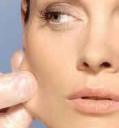Arteriosclerosis and its consequences is one of the most important problems of modern medicine. The diseases related to poor blood circulation obviously begin with all the cardiovascular problems, but also include aging, sexual impotency in men, problems of sight and memory. In general, as I have already pointed out on other occasions, the quality of the blood and blood flow are essential factors for our health. As the years pass by, as a result of unbalanced diets that are too rich in fats, sugars and calcium (dairy products), the arteries harden and lose their permeability, the blood does not flow with the fluidity that it had in youth and, in consequence, the body suffers from a lack of oxygen supply and nutrients, and fails to eliminate toxins, free radicals and heavy metals such as mercury and lead. So we could say “we’re as old as our arteriesâ€. We live in an era in which degenerative diseases are increasing and appear at an ever more early age. These diseases are largely due to arteriosclerosis.
Intravenous chelation consists of a therapy that clears out certain substances that are deposited in the blood, such as heavy metals and calcium, and eliminates them through the urine.
« Intravenous chelation consists of a therapy that clears out certain substances that are deposited in the blood, such as heavy metals and calcium, and eliminates them through the urine. »
It has been used with success for the past 40 years in the United States – the first time was to cleanse the blood of painters who had painted the American warships during the Second World War and were suffering from lead poisoning – and it is also the best prevention possible against diseases like angina, heart attack, phlebitis, etc… It also has a role to play in the treatment of a certain form of sexual impotency caused by the rigidity of the artery walls and their lack of permeability.
This complex treatment forms part of the new branch of Biological Medicine with a new medical approach that takes an overall view of the individual patient.
The treatment consists of the intravenous infusion by means of a fine needle of 500 ml of a solution into which a product called EDTA (Ethylene Diamine Tetra- Acetic Acid) + SULODEXIDE has been introduced.

The EFFECTS of intravenous chelation are :
- It cleanses the blood of free radicals
- It eliminates heavy metals such as mercury, lead…
- It reduces calcium deposits in the arteries and other parts of the body, eliminating them through the urine.
- It cleanses the blood of free radicals
- It eliminates heavy metals such as mercury, lead…
- It reduces calcium deposits in the arteries and other parts of the body, eliminating them through the urine.
- It prevents the formation of blood clots,thus preventing heart attacks and strokesor other circulatory deficiencies.
- Reduces and improves internal andexternal varicose veins, thus alleviating obstructions in the lower limbs and improving the sensation of tired legsâ€.
- After a heart attack and stroke.
- Improves circulation to the brain
- Halts senile dementia
- Improves the intellect, concentration power, memory, sight, the libido and reflexes.
- Reduces the levels of cholesterol and triglycerides.
- Eliminates many of the toxins that could be the cause of chronic articular pain.
- Reduces sexual impotency.
Currently, the anti-clotting agent SULODEXIDE is administered together with the EDTA, as it has specifications that are complementary to it :
- Cerebral, coronary and peripheral arteriosclerosis.
- It helps to lower the levels of cholesterol and triglycerides
- Vascular complications in diabetes.
- Thrombo-embolism
It is recommended to alternate this treatment with sessions of ozone therapy, making a total of 15-30 sessions, with two sessions per week. The treatment is safe and there are no risks if it is done correctly. The general condition of the patient must be evaluated and more importantly, to check that there is no condition of kidney failure because the kidneys have to work more to eliminate the calcium and metals from the blood.
—————————————————————————-
Editorial: Dr. Pier Albrecht, Dr. Pierre Albrecht, Dr. Pierjean Albrecht,
Dr. Pier Jean Albrecht, Dr. Pierre F. Albrecht, Dr. Pierre Frank Albrecht,
Dr. P. Frank Albrecht, Dr. Pierjean Frank Albrecht, Marbella Clinic














